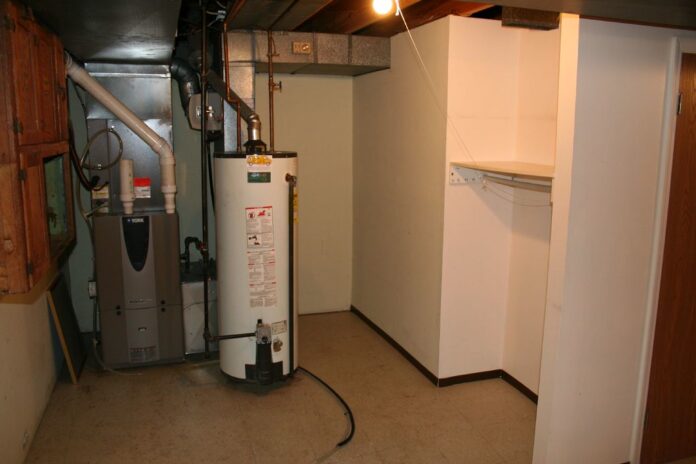Furnace Leaking Water
Furnace leaking water is a common problem that can occur in both gas and electric furnaces. The water can come from various sources such as condensation, a clogged drain, or a malfunctioning humidifier. One of the most common causes of furnace water leaks is condensation. As warm air passes over the cold furnace coils, it can cause condensation to form and collect in the drain pan. This can lead to overflowing and water leakage.
In this article, we will discuss the causes of the furnace leaking water and the solutions to fix the problem.
What are the causes of the furnace leaking water?
- Clogged Drain Line: A clogged drain line is one of the most common causes of water leaks in furnaces. Drain lines remove excess moisture from furnaces. Clogged filters prevent water from draining properly, and they may cause leaks from the furnace.
- Leaking Pipes: The furnace may have pipes that are leaking, which can also cause water to leak out of the furnace.
- Condensation: The condensation process involves the transformation of water vapor into liquid. It is possible for high-efficiency furnaces to leak water if condensation forms on their secondary heat exchangers.
- Blocked or Damaged Vent: It is possible for water to leak from the furnace due to a blocked, or damaged vent. The vent is responsible for removing exhaust gases from the furnace, and if it is blocked or damaged, it can cause the furnace to leak water.
Solutions of furnace leaking water
- Clear the Drain Line: If the drain line is clogged, it can be cleared using a plumbing snake or a wet/dry vacuum.
- Replace Rusted and Corroded Parts: If the furnace’s heat exchanger is rusted and corroded, it will need to be replaced. This is a job for a professional HVAC technician.
- Fix Leaking Pipes: If the furnace has leaking pipes, they will need to be repaired or replaced.
- Check for Condensation: If the furnace is leaking due to condensation, it may be necessary to install a condensate pump to remove the water.
- Inspect and Clean the Vent: If the furnace is leaking due to a blocked or damaged vent, it will need to be inspected and cleaned.
A furnace that is leaking water in the summer may seem like an unusual problem, but it is a common issue that can have a variety of causes.
Clogged drain line
A common cause of furnace leaks in the summer is a clogged drain line. This can be caused by a buildup of debris, such as dirt and dust, or by a problem with the drain line itself.
Malfunctioning humidifier
Another potential cause of furnace leaks in the summer is a malfunctioning humidifier. Many furnaces come equipped with a humidifier, which is responsible for adding moisture to the air in the home. It is possible for water to leak out of the furnace if the humidifier fails to function properly.
A furnace that is in an area of the home that is prone to flooding can also be at risk for leaks. If the furnace is in a basement or crawlspace that is prone to flooding, it can be vulnerable to water damage. There are several factors that can cause this, including heavy rains, broken pipes, and faulty sump pumps.
Finally, a furnace that is not properly maintained can also be at risk for leaks. A furnace that is not regularly serviced and cleaned is more likely to experience problems, such as clogged drain lines or dirty filters.
Read More: All You Need To Know About Fence Painting of Home Garden
Why is my furnace leaking water in winter?
A leaking furnace can be caused by a variety of factors, including clogged condensate lines, a malfunctioning condensate pump, and a cracked heat exchanger.
Clogged Condensate Lines
A furnace’s condensate lines are crucial to its overall efficiency and performance. These lines are responsible for carrying away the condensation that forms because of the combustion process.
However, if these lines become clogged, it can lead to a range of problems that can ultimately lead to a catastrophic failure of the entire furnace system. Some common causes of clogged condensate lines include debris build-up, corrosion, and freezing.
To prevent clogged condensate lines, inspecting and maintaining the furnace regularly is essential. This includes cleaning the pipes, checking for leaks, and ensuring that there is no build-up of debris that could block the flow of condensation. Additionally, installing a condensate pump is a good practice to help move the condensation along and prevent freezing in cold weather.
Malfunctioning Condensate Pump in a Furnace
A condensate pump is a crucial component of a furnace system, as it removes condensation produced when the furnace is in operation. However, when this pump malfunctions, the consequences can be severe. Not only can it cause damage to the furnace itself, but it can also lead to decreased energy efficiency and higher energy costs.
Furthermore, a malfunctioning condensate pump can lead to water leaks and damage surrounding areas, potentially causing costly repairs. In some cases, the pump may even fail altogether, leading to a complete shutdown of the furnace. Regular maintenance and prompt repairs can help to prevent these issues, but it is important to be aware of the signs of a malfunctioning condensate pump, such as strange noises, decreased heating efficiency, and water leaks.
Can water destroy a furnace?
Water and furnace do not mix well. A furnace is designed to produce heat, and water can cause damage to the heating system. In severe cases, water can destroy a furnace.
If the ductwork is not properly sealed, it can allow water to seep into the furnace, causing corrosion and rust to form on the metal components. Another way water can damage a furnace is through flooding. If a furnace is in a flood-prone area and is not properly protected, it can be submerged in water, causing severe damage to the heating system.
To prevent water from damaging a furnace, it is important to have regular maintenance performed on the heating system.
Do all furnaces drain water?
Furnaces are a common type of heating system used in homes and buildings to provide warmth during the cold seasons. One of the key components of a furnace is the drain system, which is responsible for removing excess water that may accumulate during the heating process. However, not all furnaces have a drain system, and this raises the question: do all furnaces drain water?
There are several types of furnaces, each with its own unique features and characteristics. Each of these types of furnaces has a different way of generating heat, and this can affect whether the furnace has a drain system.
Gas Furnaces
These furnaces use natural gas or propane to generate heat, and they typically have a drain system to remove excess water that may accumulate during the heating process. This is because the combustion process used to generate heat in a gas furnace can produce water vapor, which needs to be removed to prevent damage to the furnace or other components of the heating system.
Oil Furnaces
Oil furnaces are another type of furnace that is used in homes and buildings. These furnaces use oil to generate heat, and they typically do not have a drain system. This is because the oil used in these furnaces does not produce water vapor during the heating process, so there is no need to remove excess water.
Electric Furnaces
Electric furnaces use electricity to generate heat, and they typically do not have a drain system. This is because the heating process used in these furnaces does not produce water vapor, so there is no need to remove excess water.
What can I use to seal my furnace?
There are a variety of options available for sealing your furnace. One popular option is silicone sealant, which is a waterproof and heat-resistant adhesive that can be used to seal gaps and cracks in your furnace. Another option is furnace cement, which is a high-temperature adhesive that is specifically designed for use in furnace and stove applications.
Another option is furnace tape, which is a self-adhesive tape that is designed to withstand high temperatures. This type of tape is often used to seal joints and connections in furnace systems and can be used to seal gaps and cracks in your furnace as well.
For sealing around furnace flue pipes, a high-temperature silicone sealant can also be used. This type of sealant is designed to withstand temperatures up to 600 degrees Fahrenheit and can be used to seal gaps and cracks around the flue pipes to prevent drafts and leaks.
Another option for sealing your furnace is to use a furnace gasket. These gaskets are designed to seal gaps and cracks in your furnace and can be made from a variety of materials including rubber, cork, or foam.
Ultimately, the best option for sealing your furnace will depend on the specific needs of your furnace system, as well as the type of gaps or cracks that you are trying to seal. It is important to choose a sealant or adhesive that is appropriate for the temperatures and conditions that your furnace will be exposed to, to ensure that your furnace remains in good working condition.
Conclusion
In conclusion, a furnace leaking water is a serious issue that should be addressed immediately to prevent further damage and ensure the safe operation of your furnace. It’s best to contact a professional HVAC technician for diagnosis and repairs and schedule regular maintenance check-ups to avoid future problems.
FAQs (Frequently Asked Questions)
- What causes a furnace to leak water?
A furnace can leak water due to clogged or frozen condensate drain lines, a malfunctioning humidifier, or a problem with the condensation pump.
- How can I tell if my furnace is leaking water?
Some signs that your furnace may be leaking water include water damage on the walls or ceiling near the furnace, a puddle of water near the furnace, or a musty smell in the area.
- Can a leaking furnace cause damage to my home?
Yes, a leaking furnace can cause water damage to your home and may also lead to mold growth if not addressed promptly.
- How can I prevent my furnace from leaking water?
Regular maintenance and inspection of your furnace can help prevent leaks by identifying and addressing potential issues before they become a problem.
- Can I fix a furnace that is leaking water myself?
It’s not recommended to attempt to fix a leaking furnace yourself, as it can be dangerous and may not solve the underlying issue. It’s best to call a professional HVAC technician to diagnose and repair the problem.
- How often should I have my furnace inspected for leaks?
It’s recommended to have your furnace inspected and serviced by a professional HVAC technician once a year, or more frequently if you notice any issues with your furnace or if it’s over 10 years old.
Apart from this, if you are interested to know more about TANKLESS WATER HEATER then visit our Daily Bites category.










